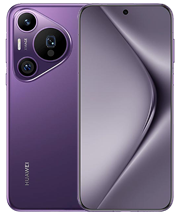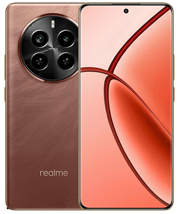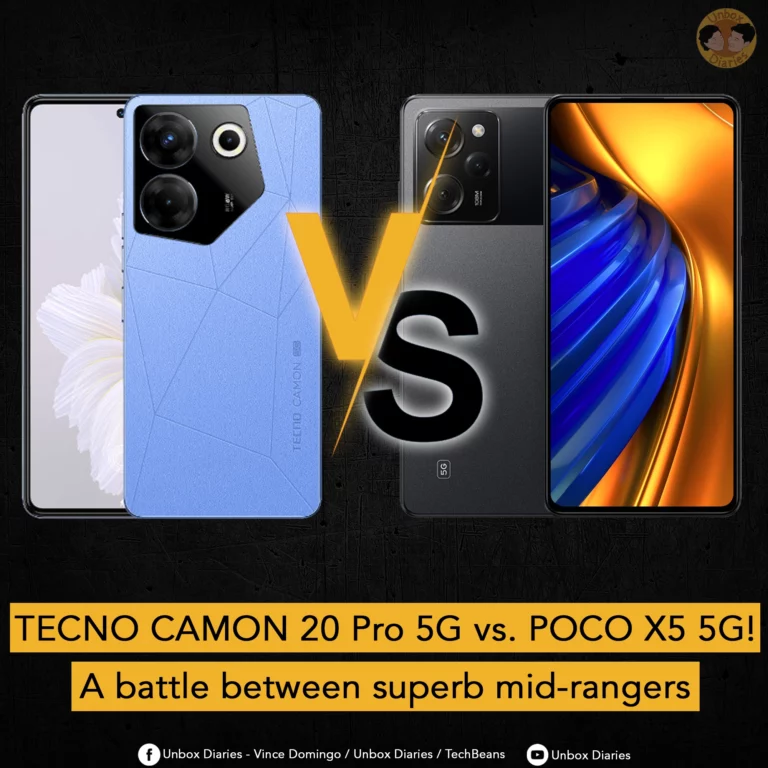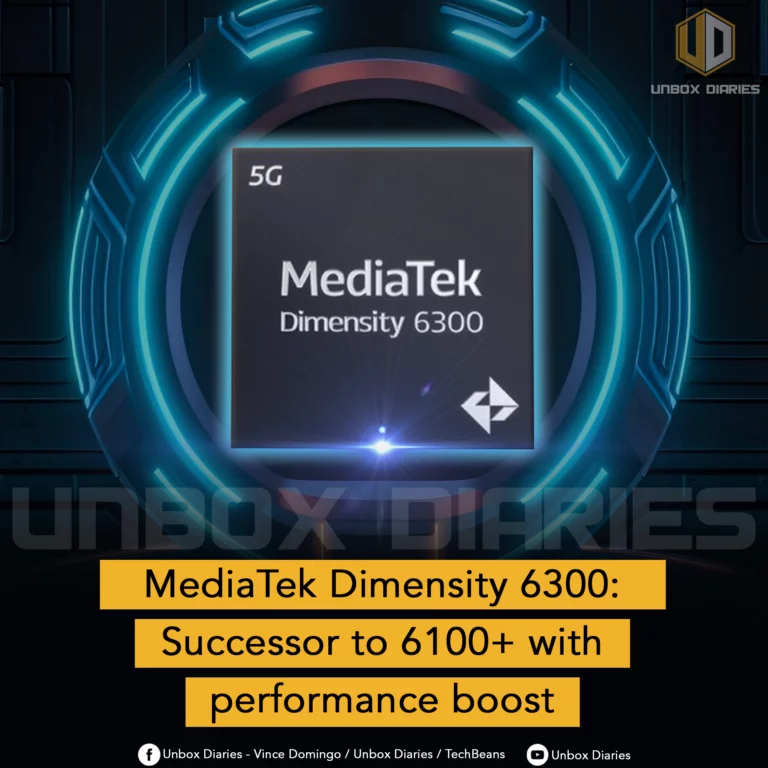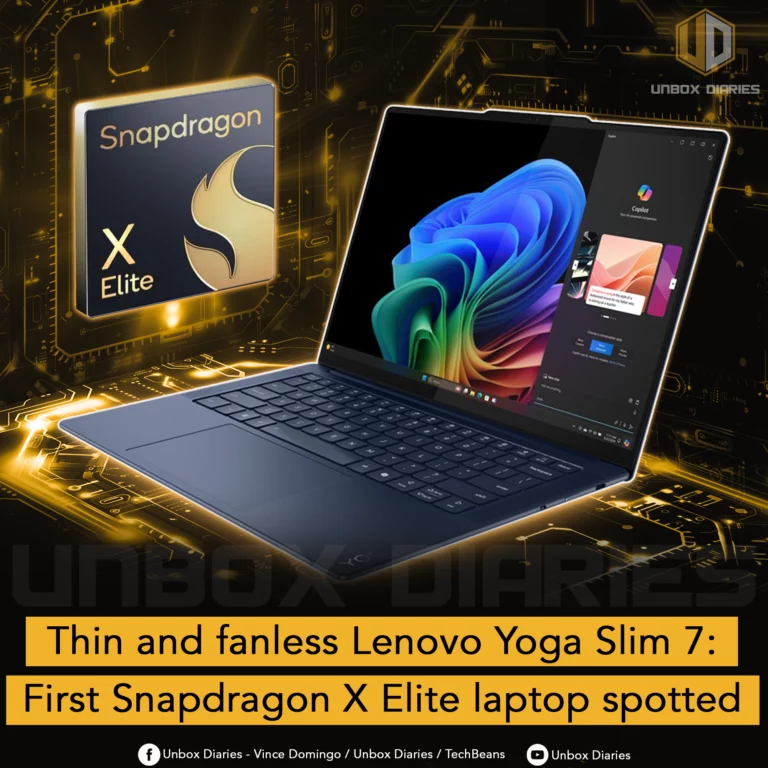The TECNO CAMON 20 Pro 5G, TECNO’s newest flagship-killing smartphone, has just been released! It has excellent specifications and is highly placed in our smartphone rankings! We’ll compare it to the POCO X5 5G, another affordable mid-range phone!

TECNO CAMON 20 Pro 5G vs POCO X5 5G!
| Specs | TECNO CAMON 20 Pro 5G | POCO X5 5G |
| CPU | Mediatek Dimensity 8050 | Snapdragon 695 |
| RAM | 8GB | 4/6GB |
| STORAGE | 256GB | 128GBGB |
| DISPLAY | 6.67 in 1080p AMOLED 120Hz | 6.67 in 1080p 120Hz AMOLED |
| CAMERA | 64 + dual 2MP rear / 32MP front | 48 + 8 + 2MP rear / 13MP front |
| OS | Android 13, HiOS 13 | Android 12, MIUI 13 |
| BATTERY | 5000mAh Li-Po 33W | 5000mAh Li-Po 33W |
| USB | Type-C 2.0, OTG | Type-C 2.0, OTG |
| PRICE | ₱11,999 | ₱14,999 |
Display
Both smartphones have the same display so there is virtually no difference really; BUT the TECNO CANON 20 Pro 5G display bezels are thinner!
Camera
Regarding with the camera of the two smartphones, there is a huge difference. The TECNO CAMON 20 Pro 5G has a camera setup of 64 + dual 2MP rear / 32MP front while the POCO X5 5G has a camera setup of 48 + 8 + 2MP rear / 13MP front.
For the TECNO CAMON 20 Pro 5G, image quality in outdoor settings is decent. The 108 MP main camera captured sharp and detailed images with good color reproduction. The 8 MP ultra-wide camera also takes good photos, with a wide field of view that is perfect for capturing landscapes or group shots.
The camera app is clean, and features some functions such as Slow Motion, Video, AI CAM, Portrait, Super Night Mode, Time-lapse, Dual Video which lets you record from both rear and front cam at the same time; Sky Shop that enhances any sky photos or footage, Documents which are handy for capturing paperworks, AR shot, Pro Mode, Panorama and Super Macro.
Portrait mode is great, it’s able to capture decent selfies and rear shots, but with minimal but noticeable noise. Blur crop isn’t the best as well, as it struggles to separate the subject in order to achieve a cleaner blurring effect. The beautification mode is on by default, so make sure to check if you want the extra oomph or not.
When it comes to the AI CAM, photos are noticeably better and with more pronounced colors. The color profile here is clearly leaning towards a true-to-life palette rather than night-to-day tuning.
Super Night Mode is decent as well, but inconsistent. We managed to capture nice night shots but for the better half of our camera shoot, it gets noisy and poor in detecting lighting accurately. After some tweaking, we managed to capture well-lit photos with the help of the bright Quad-LED flash.
Macro is alright, nothing to write home about, but it gets the job done for the most part.
Video recording tops at around 4K@30fps on the rear, and 1080p@30fps at the front. In daytime footage, the quality is above average, and with the help of OIS (optical image stabilization), it managed to keep shakiness and interference at bay in favor of a cleaner, better video footage.
Night video capturing is the same story however, noise and fair light detection are noticeable. Yes, it’s not the best you are probably hoping for. But for its price point, this is one of the better cameras out there.
Next is the POCO X5 5G:
The primary camera is built around the OmniVision OV48B sensor, one of the business’s first 4-cell (Quad Bayer) models. The ultrawide camera uses an 8MP OmniVision sensor with a 1/4.4″ optical format and 1.0m pixels. In front of it are a lens of unspecified equivalent focal length (but with slightly narrower coverage than most) and an f/1.8 aperture.
The fixed-focus lens has an f/2.2 aperture and is designed to have a 118-degree field of view.
Through the punch hole in the display, the Samsung 3L6 selfie camera sensor is visible. The Poco X5 persists in disabling the Auto HDR toggle, so you have to remember to enable it every time, or at least in more demanding lighting.
Even so, since the two available options are ‘Auto’ and ‘Off,’ you can’t really force it on and there are times when small changes in framing can influence whether the Auto HDR is enabled. Dynamic range is fairly constrained, with a sharp roll-off to black and white at the extremes, HDR or no HDR.
Despite occasionally being a little cool in outdoor scenes, white balance is generally reliable. The saturation is really good. Results from the ultrawide are similarly unremarkable when viewed in isolation but largely suitable for the class.
Although noise is once again very apparent, whether, in the skies or the darker areas of the image, detail is respectable for an 8MP camera. It is reasonable to assume that the dynamic range will be limited. White balance is reliable, and colors are pleasing.
The Poco X5 doesn’t have an Auto Night mode as higher-end Xiaomi phones do, and the Auto HDR situation is the same as it is during the day. To make the most of high-contrast scenes with dark areas and point light sources, you’ll most likely want to ensure it’s turned on when shooting at night.
The Poco X5’s portrait mode is actually quite good—almost surprisingly so. It does a fantastic job of detecting subjects, and the appropriate default blur level results in a very convincing rendition. Selfies can be taken with HDR, and by default, the phone has HDR turned off. The video quality however, to tread lightly– is average at best.
Operating system
Both Operating Systems are almost the same and offer the same level of function. The best choice for you will depend on your individual needs and preferences. If you are looking for a budget-friendly device with a long battery life and good performance, then TECNO HiOS 13 is a good option. MIUI has good customization options however.
Thing is, TECNO’s a bit more efficient because the TECNO CAMON 20 Pro 5G’s processor is better than POCO’s. It is also more clean and intuitive.
Performance
Gaming-wise, the TECNO CAMON 20 Pro 5G is the best sub-15K pesos range smartphone money can buy here in the country, even more affordable than last year’s darling, the POCO X4 GT. Thanks to the beefy Dimensity 8050 that clocks in at 3.0GHz, gaming isn’t a problem here at all.
On AnTuTu version 10.0.1, the TECNO CAMON 20 Pro 5G scored an impressive 704,950 points that places it in the ranks of flagship killer devices. Ten-point multi-touch is also confirmed here.
Meanwhile, for the POCO X5 5G, it has the Snapdragon 695 chipset, a well-liked no-frills platform for obtaining 5G capability in the midrange market. The CPU is an octa-core Kryo 660 Gold and Kryo 660 Silver in a 2+6 configuration, and the GPU is an Adreno 619.
There are two memory configurations: 8GB/256GB and 6GB/128GB (as tested). It was decent in all the games we have tested but, the TECNO CAMON 20 Pro 5G is miles ahead in this regard.
Price
The TECNO CAMON 20 Pro 5G is priced at ₱11,999 which is significantly less costly than the POCO X5 5G which is priced at ₱14,999 for the base variant.
Conclusion
In conclusion, both phones are great options for mid-range phones on a budget. The TECNO CAMON 20 Pro 5G is just better in virtually everything, while the POCO X5 5G just looks good.
The TECNO CAMON 20 Pro 5G just blows every competition out of the water with its extremely absurd specs.



